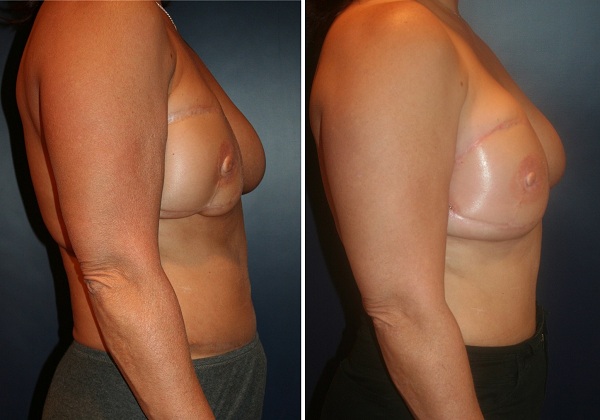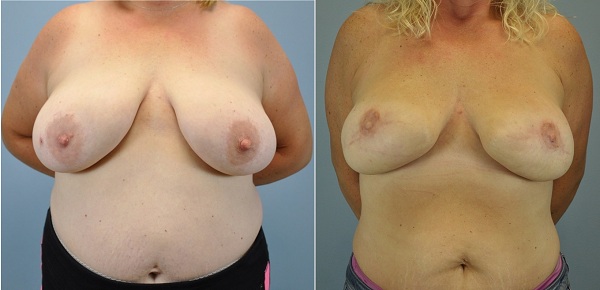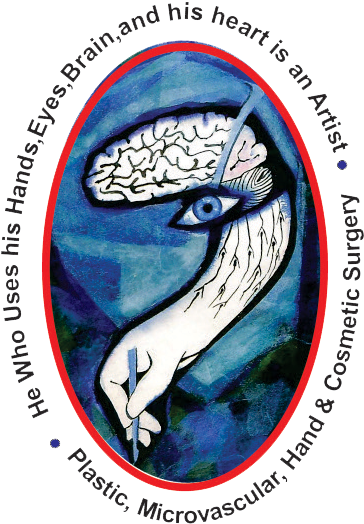Breast Reconstruction
The procedure recreates a breast with the desired appearance, contour, and volume. The nipple and areola are also recreated. Normal breast sensation and normal breast function, as with nursing, do not usually return when the sensory nerves or milk glands and ducts have been removed or significantly injured.
The appearance, contour, and volume of the breast can be recreated with implants or with a woman’s own tissue. If an implant is used, the implant is sized to match the opposite breast. When possible, the implant is placed beneath a chest muscle. A breast also can be recreated using a woman’s own tissue. At times, a segment of the lower abdominal wall can be used. Other tissue options for autologous (using your own tissue) reconstruction are back muscle and skin or fat and muscle from the buttock. Sometimes surgery on the opposite normal breast will be required to create symmetry with the newly reconstructed breast.
Breast reconstruction can be done at any time after you have had a mastectomy. The procedure has no known effect on the recurrence of cancer and it does not appear to affect cancer surveillance. However, you will be instructed on breast self-exams and scheduled for routine follow-up appointments for surveillance.
# Breast reconstruction with flap surgery using tissue from your abdomen (belly, tummy):
- DIEP Flap
- SIEA Flap
- TRAM Flap
Many women are pleased with breast reconstruction using belly tissue because it’s like having a tummy tuck to rebuild a breast.
# Flap reconstruction using tissue from your back:
- Latissimus Dorsi Flap: This approach almost always requires an implant, too, so it is not purely a flap reconstruction.
# Flap reconstruction using tissue from your hip/buttocks:
- IGAP Flap
- SGAP Flap/Hip Flap
# Flap reconstruction using tissue from your thighs:
- PAP Flap
- TUG Flap
Questions? We got Answers!
The options for reconstruction can be divided into three general categories:
- Implant only
- Using your own body tissue only
- Implant combined with using your own body tissue
All reconstructive options will require multiple surgeries and take time to achieve the final result.
The best method for you depends on many factors, including your:
- Body shape
- Past surgeries
- Current health
- Treatment needs
- Personal preferences
During your consultation, the surgeon will discuss your reconstructive options, including the risks, benefits and choices for each procedure. You will also discuss the expected outcomes from reconstruction.
The timeline for completing breast reconstruction varies, depending on how many surgeries are done and the need for other cancer treatments. The reconstruction process takes 6 months to one year, no matter what procedures are chosen, and if no further cancer treatment is necessary. Many patients may choose to not have a nipple reconstructed or may require multiple surgeries to make the reconstructed breast look like the remaining natural breast. Here’s a general reconstruction timeline:
Step 1: First surgery to create breast. Wait about three months for healing. Increase this time if you need chemotherapy or radiation treatment.
Step 2: Surgery to make any changes to refine or balance the reconstructed breast. Wait about two to three months for healing. This step may be repeated as needed.
Step 3: Surgery to add nipple and areola.
The ultimate goal of reconstruction is to create a breast that is symmetrical with the remaining natural breast. Sometimes, getting the reconstructed and natural breasts to match is difficult unless surgery is performed on the natural breast, too. For some patients, this may involve placing an implant in the natural breast to make it larger (augmentation); making the natural breast smaller or less droopy by reducing the tissue (reduction), or lifting the breast skin (mastopexy). Your surgeon will discuss these options during your consultation. This “balancing procedure” is often done 3-6 months after your first surgery, to make sure the reconstructed breast has healed and is the desired size and shape.





